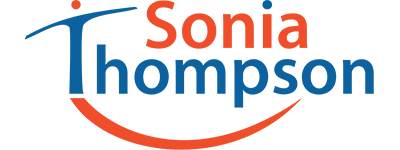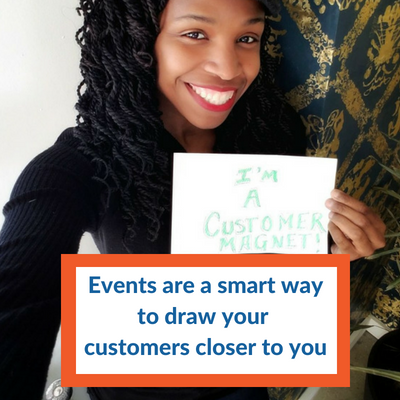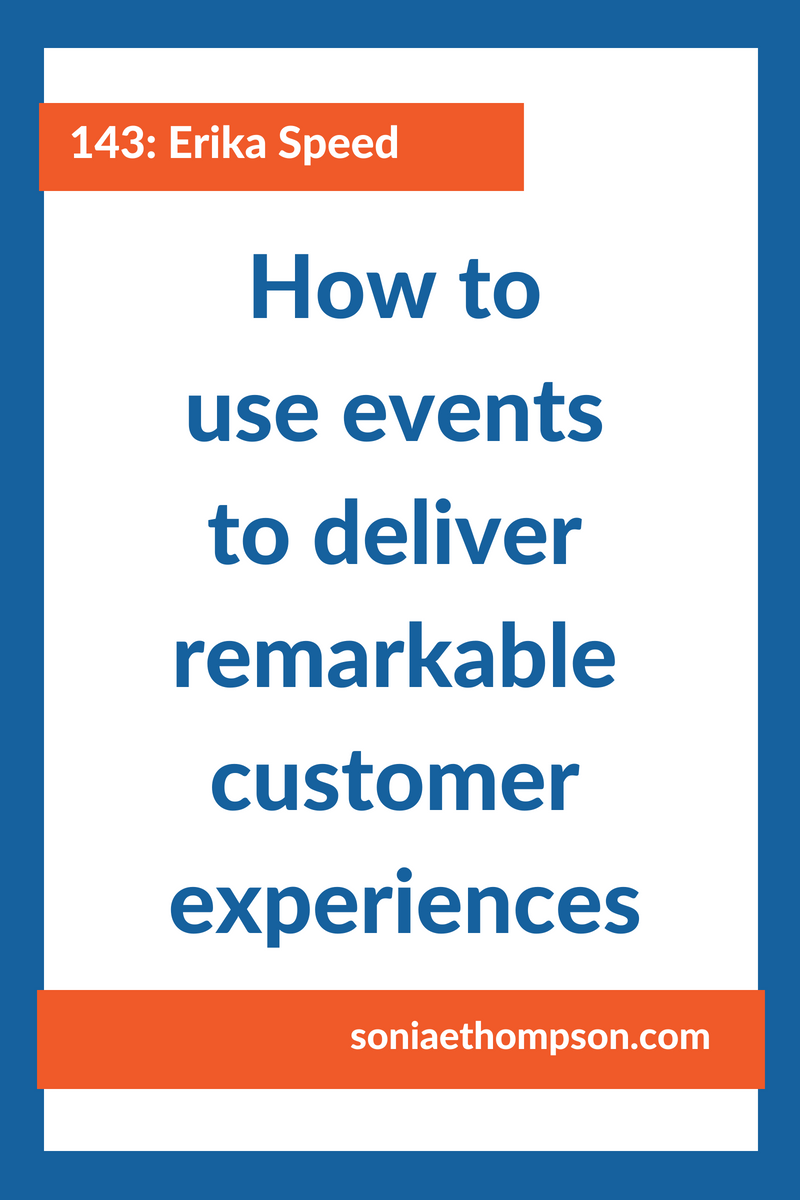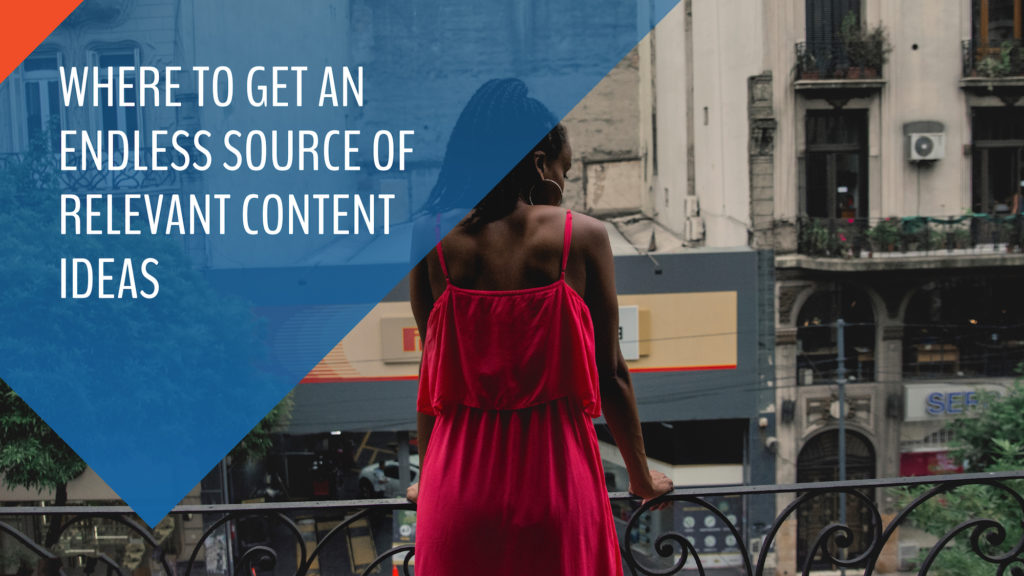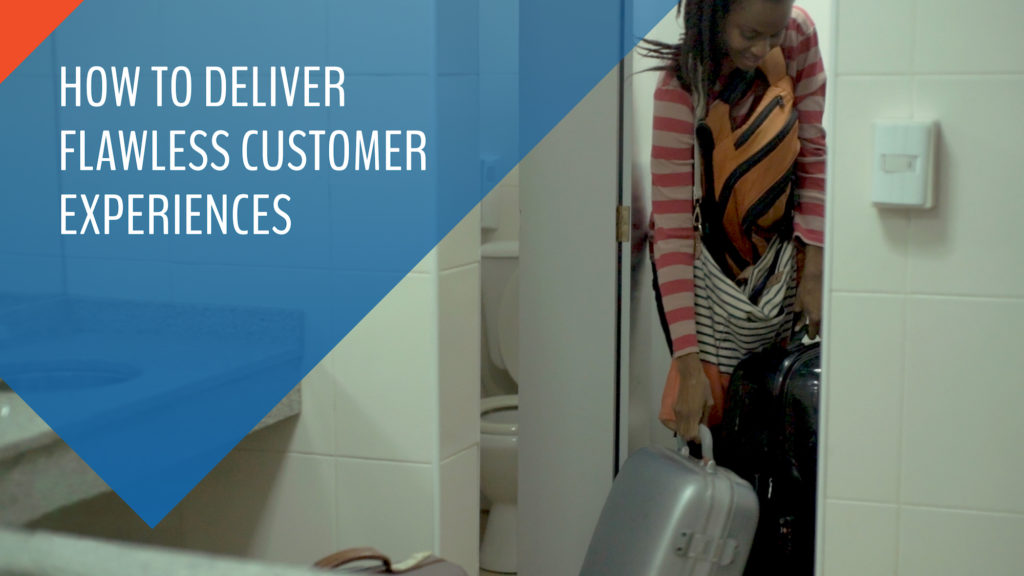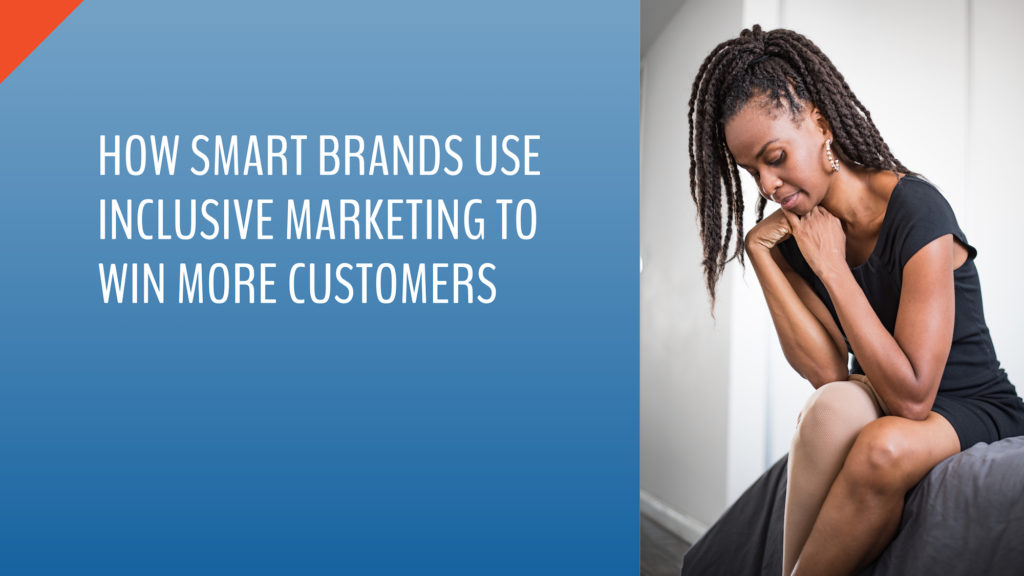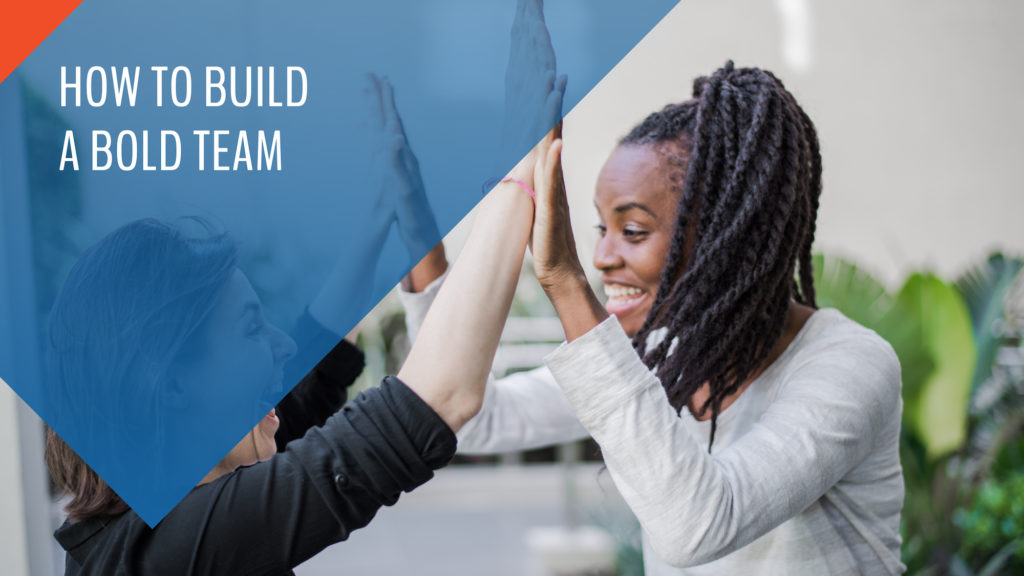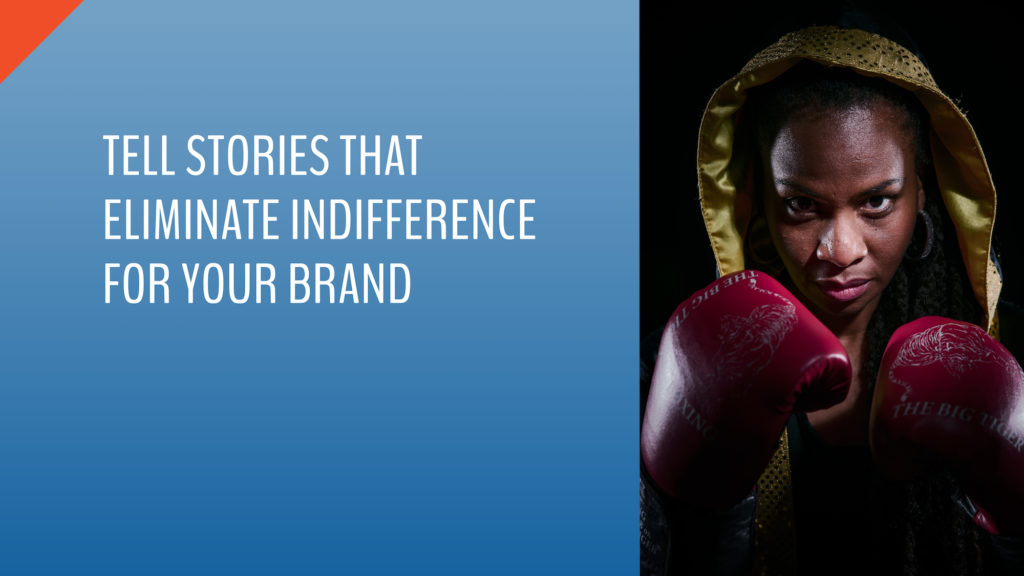Today we are talking about events, and specifically how to use them to build your brand and of course to deliver remarkable experiences that draw your ideal customers closer to you.
And to dive into this topic, I spoke with Erika Speed, founder of The Cre8tive Artisan, an event planning company that helps businesses deliver memorable events.
We can learn a ton from Erika, in particular the core things you need to remember to plan an event that draw you closer to your customers.
Key points:
- How events make your customers feel like they belong with you
- How to deliver experiences your customers want to be a part of
- Simple ways to get your customers to unmask, so you can get to know them at a deeper level
- Essential elements needed to deliver a remarkable event (rather than a stale one)
- The number 1 rule for using an event to elevate your brand with your customers
- Common mistakes to avoid when planning a customer event
- How to measure the success of your events
Listen to the 21-minute episode here:
Watch the episode here:
Read a transcript of the episode here:
How events help you deliver remarkable customer experiences
Sonia Thompson: Hello, Erika. Thank you so much for joining me today. How are you?
Erika Speed: I’m doing well, how are you?
Sonia: I am fantastic. All right, well let’s go ahead and dive right in. Tell me about your business, The Cre8tive Artisan.
Erika: So The Cre8tive Artisan is a company that I founded, it’s a boutique event planning agency where I curate unique and engaging lifestyle experiences for people to connect in meaningful and authentic ways. And so I wanted to create something that was purpose driven because I feel like the state of the world that we’re living in right now, the people really have a need to connect in deeper ways than beyond the surface.
Sonia: Got it. Now what is the specific problem that you solve for the people that you serve?
Erika: I think a lot of times people just are so used to the same run-of-the-mill type of events. For instance, like a networking event that you go to, there’s like your typical happy hour. People come in, they don’t know anybody and the first question is “Oh, what do you do?” And people want to put people in this little box, in this category, without having these deeper conversations that could be had, like a more meaningful connection. And so I am really passionate about creating spaces where people can engage beyond what they do from their 9-5, like in who they are and really who they are beyond the surface. And so I really wanted to create environments that are conducive to that.
Sonia: I like that, I like that. Especially, I say this a lot, business is about belonging and if you are able to create environments that help facilitate people feeling like they’re in a place where they belong versus one that’s more uncomfortable, they’re nervous, they’re anxious, that’s no good. So you spoke a little bit about experiences, and lifestyle experiences, what exactly are those? That’s a phrase that you’re starting to hear pop-up more and more these days. So how would you describe them?
Erika: For me, I would define lifestyle experiences as events that kind of enhance peoples lifestyle. It’s like not your typical run-of-the-mill type of event. So it’s things like people might learn more about themselves, through different engaging activities or through experiential activations or just connecting with people in ways that are not traditional.
I pretty much fell in love with the lifestyle environment from the previous job that I was in where I was a lifestyle director and I was charged each month with curating 3-4 events where people could build community. So these people lived in this residential building and New York is just like a crazy place to live, people are always constantly walking around with these masks on. And you have to give off this persona and so I really was excited about having the opportunity to create a space where all these people come from all these different walks of life and from different things and trying to figure out a way to kind tie them all together to bring them in a unified way so to speak through something they may have never done before or something that could show them a little bit more about themselves.
So whether it was a paint and wine night with a little twist, or it was learning how to cook different things, you know they’re not really familiar with cooking and recipes. Or whether it was bringing in a salon discussion where I would have somebody talk about essential oils and different ways and doing different things. So I just kinda use it as space and opportunity to kind of bring in new elements of life. So it’s not like things that you’re constantly kinda doing and just like in this routine of monotony.
Sonia: Got it. Now you said a couple of different things there and I wanna dig into. The one is more so about how companies can use experiences ’cause these experiences sounds like a lot of fun from the consumer standpoint or anybody who’s going to be attending them. But from a company point of view and you said your last job and this is of course what you do now with your own business, you were tasked with doing this on behalf of companies as a way to engage. How do experiences help connect customers to the companies that are serving them?
Erika: I think it helps connect them more with the name and the brand ’cause I think a lot of times people are so not in tune with what their consumers want and they are so focused, like marketing truly is important but you also have to find a way to connect with who you want to connect with. So you have to find out what’s important for these people and you have to learn to speak their language and connect with them in different ways that are meaningful to them.
So it helps with retention, it helps with brand loyalty, it helps with like a lot of things in terms of like if you need that differentiator between a consumer picking your company versus another one, if they feel more connected to what you’re doing and they feel like you’re listening to them and creating things that are for them, that’s gonna create more brand loyalty to the product or to the service that you provide.
How events can help you develop a deeper degree of intimacy with your customers
Sonia: Got it. Now how do these experiences help customers discover more about themselves, and I like how you said that, as you’re thinking about a company and a brand, trying to get to know their customers at a deeper level and create more of an emotional connection with them, sometimes you’re gonna have to dig beyond a superficial level. So how do these experiences help the customer and the company learn and discover more about the customer?
Erika: I think that it’s a way to dig deeper, for instance, I’m trying to think if I can even think of a good idea right now. But I think it’s a way for people to just really kinda learn more beyond what they think that the customer wants. So you kinda learn what they really want and I think that’s ultimately what any business is trying to do. When you put a product out there, you put a service out there, you may have it in your mind, what you think people want but you really need to be in tune to what the audience really wants. And it’s a way to engage with them on a different level and something that’s more authentic and I think authenticity is another buzzword that you’re hearing a lot today and I think that’s really important for people to connect authentically to the consumer or to the business. It’s a way to create that next level of elevated engagement with them.
Sonia: For sure, for sure. Now you mentioned, whenever you were first talking about the types of experiences you like to create for your customers, that you don’t want to create the standard, ho-hum events that are boring, that people are used to. From your point of view, what separates a remarkable event from a ho-hum, boring, standard run-of-the-mill one?
Erika: To me, I think it’s something where you walk away with like “Wow, I really enjoyed that.” I think a lot of times, as you get older and you kinda go to different events, especially depending upon what you do in your day-to-day work, you may find yourself going to the same event over and over and you’re kinda living in an episode of Groundhog Day.
And it’s like an event like “Uh, I have to go to this other happy hour, I have to go to this networking thing and this meeting.” And it just kinda gets old and stale. So when you go to an event or an experience that kinda takes you out of that, and you walk in thinking that you’re expecting one thing but like when you get in there and it’s like wow, you’re taken out of your comfort zone or you’re doing something that’s totally different, out of your norm. I think when you walk away with having that type of a feeling, that’s something that kinda creates a remarkable event.
So like with the standard happy hours and things, I always have an element of surprise and if people may not necessarily know what they’re walking into, you’re not gonna find yourself going and asking the person “Oh, so what is it that you do?” You may have to create a question such as “What inspired you today? What made you excited?” So it creates a whole other level of conversation and it makes people take off their masks that they have to constantly wear and kinda of see themself in another humanistic kind of way. And so that’s what’s really important to me in the events that I create and that’s, when I go to events that kinda of allow me to create those type of things for other people or when I go to events like that, that really makes me leave away with a remarkable feeling.
Sonia: And I like what you just described, there are times where the events can be larger productions and then there are other times where the thing that makes it distinctive doesn’t have to cost money at all. It’s just as simple as creating a space for different types of conversations to be able to happen, which I think is a beautiful thing.
Erika: Yeah, I agree.
How to produce a successful event
Sonia: So what should businesses be thinking about when looking to create an event as an experience, ’cause I feel like those are two separate things. They can be one, whenever you combine them together but what are the baseline considerations that they need to be thinking through to elevate their event to something that’s worth talking about?
Erika: I think they really need to truly consider who these events are for and I think it’s something that’s so simply said but a lot of people don’t really pay attention to it. And so like, I think people get in their mind these grandiose ideas that they want to do but it may never even be relevant or targeted to the people that they’re creating these events for. So it’s really important to either have a focus group of the people that you’re wanting to create this event for, so you’re really tapping into what’s important to them and kinda meeting those details of like the things that they’ll want to experience in the event or what is gonna be important to them in terms of meeting your goals.
And I think it’s really important to know the audience and to really be aware of like what it is that they are wanting to connect to. ‘Cause if you go in wanting to create something that’s not in line with what the people want, then you’re not really getting the results that you’re hoping to get to, and that’s not helping with your retention and that’s also not really helping out with the brand recognition that you’re trying to do, if that’s the people that you’re wanting to connect with.
Sonia: For sure. Now those sound like great best practices, whenever you’re setting out to create an event as an experience. Are there other ones that you would recommend?
Erika: Trying to think. I’m typically like a really big people person, so I always love different types of people and I never put people in a box of who they are. So I encourage other people to have that same outlook when they’re approaching the event or the experience that they want to create, just to really be open to connecting with the different people, people who may be different from you or people who may think different from you. ‘Cause I think when you connect the dots that way, it allows for more creative opportunity and freedom to develop as you’re wanting to create a remarkable experience or an event for somebody.
Sonia: For sure. Now what would you say are the most common mistakes that you see businesses falling into, getting caught up in, when it comes to creating events as experiences?
Erika: I’d say that the biggest event, again, kinda goes back to that simple thing of now knowing and pay attention to who they’re creating these events for. I think when you lose track of who you’re creating the events for, even, and it’s not really an event, but even if you look at like the Shea Moisture like thing that took place, an idea in theory and they thought they were creating this experience and this marketing piece, for this consumer but they really weren’t in alignment with who they were creating this ad for.
So I think you always have to go back to the basics. So I think going back to the basics of who you’re creating these events for and what will be important to these people and kinda using that as your grounder in terms of creating anything. I think think that that’s really important to really pay attention to and to really keep on top of mind as every decision and every detail, everything that you’re putting forth, that’s what you should be really keeping top of mind. I think a lot of people lose track of that sometimes.
How to measure the success of your event
Sonia: For sure. Now a lot of businesses will look at experiences with dollar signs in their eyes, wondering what is the return on investment? So if I spend $1,000 on this event, will I make back $1,500 or whatever their numbers are. Is it okay to do with experiential events? Should you be thinking about it from an ROI standpoint or is it really not that cut and dry, if you do X, you’ll get Y, or Z or whatever?
Erika: Yeah. I don’t think it’s necessarily always so black and white. I think there’ll be times where you may need to really focus on that and it also depends on what your end goal is that you wanted to accomplish. It may not always be the exact same thing that you’re doing every time. You have to look at what the objective is and what will be the best way to meet that. So if your brand is suffering or you’re noticing that you need to grow and stretch your brand in a certain area, you may need to bring in more money and focus in on the dollars in that way. Or if it’s something that’s more simple in nature, they may not have to be as focused in on that. But it goes back to what the objective of the company is in terms of what that is. So it’s not always so black and white, I don’t think.
Sonia: Are there specific metrics that you recommend that you think people should be tracking or thinking through as it relates to these types of events?
Erika: I think it depends on the company. So I work with a lot of different companies and different things so I may have an organization that’s wanting to put together a conference for educational professionals. So what their metric is would be a little bit different than like say a non-profit that I’m working with that’s wanting to put together a festival to help bring the community together. So it kinda depends on the organization and what their priorities are. It’s a little hard for me I guess to kinda think in that-
Sonia: It depends. It’s one of those, it depends. It’s no problem. And most things are, they’re very relevant to what your business is.
So is delivering these types of experiences something that needs to be done on a consistent basis or somewhat consistent basis or can you get the same impact from doing a one-off here and there?
Erika: I think that, and I hate to sound redundant, but again I think it depends on what your main objective is. I feel like new companies or like new brands, you definitely want to have a level of consistency to what you do because you’re trying to expand your brand and trying to get that recognition and trying to build a loyalty, whereas someone who’s more rooted in like a brand that has an existing audience is always coming to things, you can kind of spread it out a little bit farther and do like larger and grandiose things to continue to build on that brand experience. So I think it just really kind of depends on what the objective is and that.
But I think you have to be doing something. I think thats, you can’t just sit there and not exist. You have to, that’s the only way that you’re gonna grow and that’s the only way you’re gonna connect with your consumer and to create these experiences where people are constantly reminded of what it is that you do and how it is that you can help them. Whether it’s like a service or like a product, you need to stay on top of mind awareness, so you need to constantly be thinking of things that you can do that help elevate your brand experience and experiences are a great way to do that.
Sonia: Love it, love it. Whenever you, let’s say you decide you’re gonna do events on a somewhat regular basis or you’re gonna make this a part of your marketing mix, do you need to vary them? Can they be like the same events that you’re kinda running over and over again or do you need to have different types of events that you do over time?
Erika: I think you should do different events because the only thing that’s constant is change. So your audience is maybe gonna change in some of the ways that they think about things so you need to be kind of growing and open to changing with them as they change as well. There’s some standards that you can do, whether it’s like a conference is taking place and you’re gonna always have those basic formulaic things that you’re gonna do but you also need to kind of also be … to me as a creative artisan, you need to be kind of thinking of ways to elevate that experience a little bit more and to have something different so it’s not so routine and run-of-the-mill, that people are coming and like “I know what this is gonna be about this time.” You wanna have that element of surprise to kinda keep the relationship going, growing and keep it exciting and fresh.
Sonia: For sure, for sure. Erica, this has been super cool. Where can people find you if they wanna learn more about The Cre8tive Artisan and creating events as experiences that your customers deem remarkable?
Erika: They can find me on my website which is TheCre8tiveArtisan.com. And creative is spelled a little bit different because I’m creative, it’s The C-R-E-8-T-I-V-E Artisan.com and you can also find me on all the social channels under that as well, so Instagram, you can find me on LinkedIn under Erika Speed, or you can also find me on Facebook, which I am working on but it’s there.
Sonia: All right, and I will have all the information in the show notes so people can access you easily. All right, Erika, any parting words of wisdom for business leaders who want to use events as a way to deliver remarkable customer experiences in the people that they’re serving?
Erika: Again, just make sure that you know the audience that you’re wanting to create these remarkable experiences for. Don’t assume that you know everything about them. Make sure that you have people that are good reflectors for you to bounce things off on to make sure that what you are looking to create is gonna be relevant and touching for them. And just to be creative in all that you do and then to just always be thinking about creating that elevated experience that will help people really love you.
Sonia: Sweet. Thank you Erika, this has been a lot of fun.
Erika: Yes, I enjoyed it. Thank you.
Show notes:
Free Mini-Course: The Customer Magnet Playbook
Free Mini-Course: The Customer Magnet Playbook
7 Essential elements your business needs to consistently win more customers
- Framework based upon in the trenches experiences from 150+ business and thought leaders
- Science-based explanations to support why the elements of the blueprint work
- Action items to help you get some quick wins
